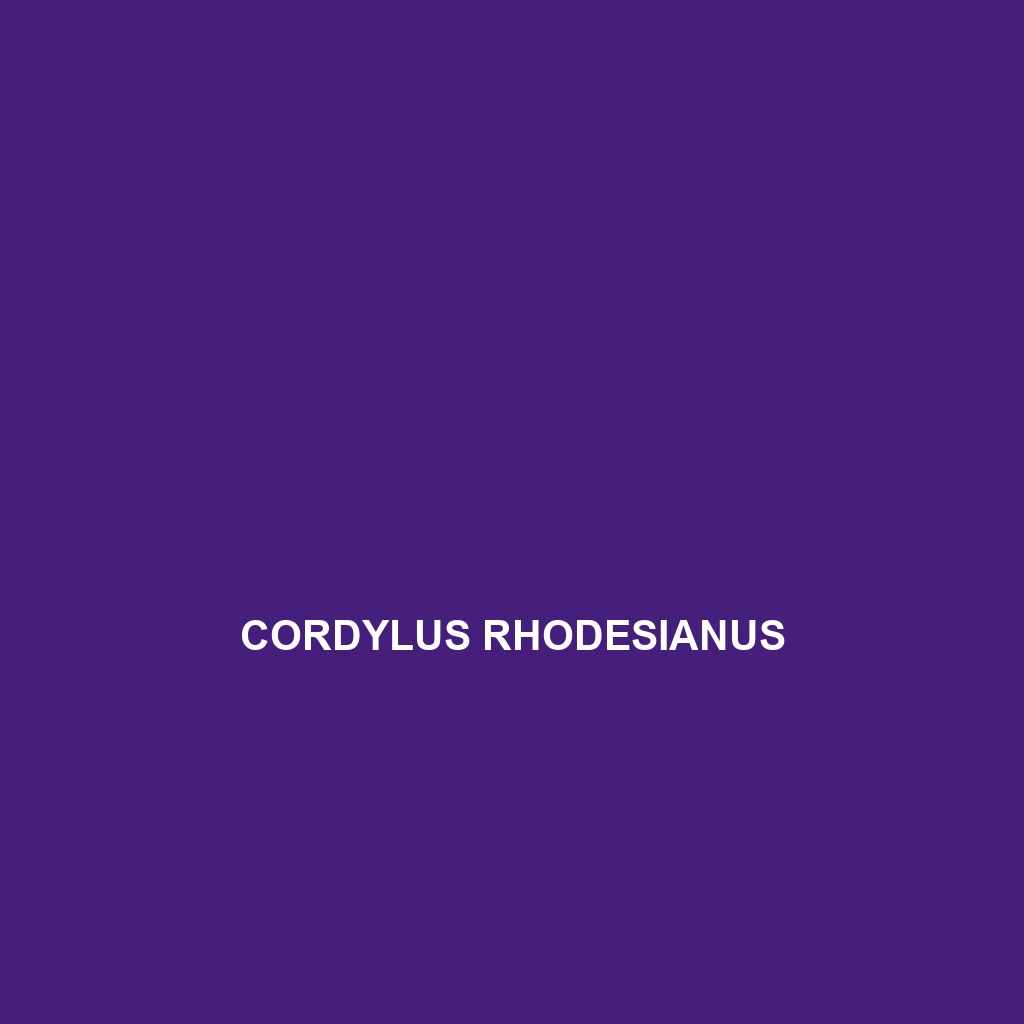Cordylus rhodesianus: An In-Depth Species Description
Common Name: Cordylus rhodesianus
Scientific Name: Cordylus rhodesianus
Habitat
Cordylus rhodesianus, commonly known as the Rhodesian girdled lizard, is primarily found in the savannas and woodlands of southeastern Africa, particularly in regions of Zimbabwe and Zambia. This species thrives in rocky outcrops and bushy areas where it can find shelter and bask in the sun, showing a preference for warm climates and well-draining soils.
Physical Characteristics
The Rhodesian girdled lizard typically measures around 20 to 25 cm in length. It is characterized by its stout body, short legs, and a distinctive flattened skull. The scales are prominently keeled and arranged in a striped pattern, which often varies in color from brown, grey, or olive-green, providing effective camouflage against predators. Its tail is robust and plays a crucial role in its balance while navigating rocky terrains.
Behavior
Cordylus rhodesianus is a diurnal species, meaning it is most active during the day. These lizards are known for their territorial behavior, often displaying aggressive postures to defend their habitats from intruders. Additionally, they are adept at burrowing and often hide in crevices or beneath rocks to escape heat or threats. Their ability to remain motionless allows them to avoid detection by predators.
Diet
The diet of Cordylus rhodesianus consists mainly of insects, including ants, termites, and various small invertebrates. This species is an insectivore, utilizing its keen eyesight and quick reflexes to hunt down prey. Occasionally, they may consume plant matter, particularly during dry seasons when insects are less available. Their feeding habits demonstrate adaptability to changing environmental conditions.
Reproduction
Cordylus rhodesianus breeds in the warmer months, typically between September and December. Females lay clutches of 2 to 5 eggs, which are often hidden in sandy or loose soil to protect them from predators. Hatchlings emerge approximately four to six weeks later, resembling miniature adults and are immediately independent, relying on their instincts for survival.
Conservation Status
Currently, Cordylus rhodesianus is classified as Least Concern according to the IUCN Red List. While there are no immediate threats to the species, habitat destruction and climate change may pose risks in the future, underscoring the need for ongoing monitoring of their populations and habitats.
Interesting Facts
– Cordylus rhodesianus can inflate its body to deter predators, making it appear larger and more formidable.
– It has the remarkable ability to regenerate its tail if lost, though the new tail may not have the same coloration or structure as the original.
Role in Ecosystem
As an insectivore, Cordylus rhodesianus plays a vital role in controlling insect populations within its ecosystem. Additionally, it serves as a food source for various larger predators, contributing to the biodiversity and food web stability. By maintaining balance in their habitat, they help support the overall health of their environments.
